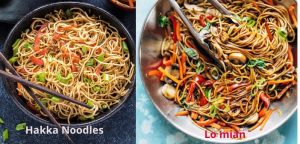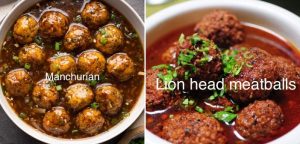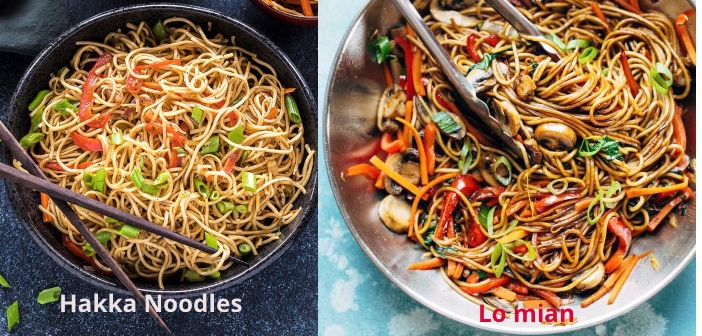It’s so fascinating that where borders and differences divide us, Food whole-heartedly unites us. The flavors, spices, and cuisines transcend beyond boundaries. Indo-Chinese cuisine is truly the intersection of the subtle nuances of flavors and culture. China and India, the two most populous countries in the world, boast their rich food cuisine. Let’s dive a bit into the history of Indo-Chinese cuisine. The trail begins in the eastern city of India, Kolkata. Kolkata serves as one of the largest China towns in India.
It is believed that around 250 years ago, during the colonial rule, a southern Chinese man named Tong Atchew immigrated through the silk route, hailing from the Hakka Tribe, settled in Kolkata, and established the legacy of Indo-Chinese cuisine. And now, In modern-day India, from streets to Michelin star hotels, Chinese cuisine with a blend of Indian spices has become a popular choice.
One fun fact: There is a Chinese Kali Goddess temple that offers noodles as a blessed food for its visitors. Truly, Chinese Food in India has created its own unique identity.
I have had the Indian version of Chinese food for most of my life, Indo-Chinese food. But what is Indo-China food? Essentially it is the fusion of Indian spices and Chinese culinary styles. A year ago, I came to China and was insanely excited to please my taste buds with authentic Chinese food, and that’s when I began to explore the nuances of similarities and differences between Indo-Chinese cuisine and authentic Chinese cuisine.
Let’s compare some delicacies to dig in deep:
Hakka Noodles vs. Lo Mien

The Hakka population introduced Hakka Cuisine when they migrated to Kolkata 200 years ago, and since then, there has been no turning back.
Hakka noodles, one of the popular Indo-Chinese dishes, boast popularity all over India. It is served in almost every Indian restaurant and street-side stall. These Indo-Chinese noodles are the perfect blend of crunch, spice, and goodness. Hakka noodles are made of rice flour and are roughly tossed with chopped veggies, noodles, soy sauce, chili sauce, and vinegar. However, to make the Hakka noodles spicier, often times restaurants fused the Chinese sauces with Indian spices like laal mirch powder (red chilly powder). I have grown up eating Hakka Noodles combined with Indian spices, and I genuinely adore the Indian twist in the dish. After coming to Beijing, I got the chance to taste lo mien; as a vegetarian, I found lo mein noodles a perfect delight. This dish can commonly be found in any Chinese restaurant in Beijing or around China. In comparison, Hakka noodles uses similar sauces. However, lo mien noodles are made of egg instead of Rice. Like the Hakka noodles, it is tossed with freshly chopped veggies, soy sauce, and other authentic Chinese sauces.
Chilly Paneer Vs. Mapo Tofu

At first glance, you must be wondering what the difference between these two is? Let’s just say chilly paneer is the brother of mapo tofu from another mother. Chilly paneer (cottage cheese) is fresh, crispy cheese cubes sauteed with roughly chopped veggies and different hot and sour sauces. The key ingredients in chili paneer are cottage cheese and a diverse range of sauces consisting of both Chinese and Indian flavors.
However, most Indians prefer the hot and sour flavors, suggested by the name “chilly paneer.” On the other, we have mapo tofu, hailing from Chengdu, located in the Sichuan Province. Mapo tofu, just like the chilly paneer, is also known for its hot and sour flavor; the natives describe the mapo tofu by key terms like má which means numbing), 辣 là (spicy), 烫 tàng (hot), 鲜 xiān (fresh), 嫩 nèn (tender), 香 xiāng (aromatic) and 酥 sū (flaky).
Like the chilly paneer, the mapo tofu is sauteed with freshly chopped vegetables. However, the key difference is that chilly paneer consists of paneer, a type of cheese, whereas, in mapo tofu is made up of soy. However, another key difference would be the use of different oils in both dishes; mainland Chinese dishes usually use sesame oil, whereas Indo-Chinese dishes prefer refined oil. But overall, chilly paneer and mapo tofu are no less than separated twins by birth.
Manchurian Vs. Lion Meat Balls (狮子头 – shīzitóu)

Let’s move to our third and final face-off!
Manchurian was born in the economic capital of India, Mumbai. Manchurian means a native from Manchuria, and it resembles northeastern Chinese cuisine. Manchurian is an adaption of Chinese culinary practices but with the seasoning adaptable to the Indian taste buds. Like the other dishes mentioned above, it uses similar ingredients like soy sauce, chilly sauce, and freshly chopped veggies. But in this dish, the best is cabbage balls or chicken balls, depending on which one you prefer. Manchurian consists of moist cabbage balls or chicken balls dipped in the rich, saucy Indo-Chinese spices gravy.
On the other end of the spectrum is the “lion’s head meat balls,” which are similar and different to Manchurian. Lion’s head meatballs resemble the Chinese lion guardian, as the name suggests. These are essentially the pork meatballs bruised with the veggies. Sometimes, instead of the pork meatballs, this dish can also be prepared with Napa cabbage balls. However, the only significant difference between Manchurian and lion meatballs is the usage of pork and different oils; apart from that, the use of sauces in the dish is pretty much the same; both the dishes have a savory and hot taste.
Pro Tip:
Mr. Pastakia, the owner of the Taj Pavillion Restaurant, : “The Sichuan style and southern Chinese cuisine are more prevalent and adaptable in India due to the strong spicy flavors. However, the critical difference is that the Chinese Food served in India still has a colonial identity; for example, Indo-Chinese cuisine still uses the term Schezwan instead of Sichuan. In contrast, in Mainland China, the Chinese cuisine has progressed a lot in terms of presentation and quality compared to the Indo-Chinese. Though there are significant similarities since the inspiration of Indo-Chinese comes from the native Chinese who immigrated to India during the colonial period.”
Find it:
3/F, Lido Place, Jiangtai Lu, Shoudu Jichang Lu, Chaoyang District
阳区首都机场路将台路丽都假日酒店广场缤纷廊3层
Tel: 64367678
Mr.Parambeer, head cook at the Indian Kitchen: “The Indo-china food has more spice than the Mainland Chinese food, and the mainland Chinese food is more meat-based.”
Find it:
2/F, 2 Sanlitun Beixiaojie, Chaoyang District
朝阳区三里屯北小街2号2楼
Tel: 6462 7255
Images: Kannika Mehrotra




